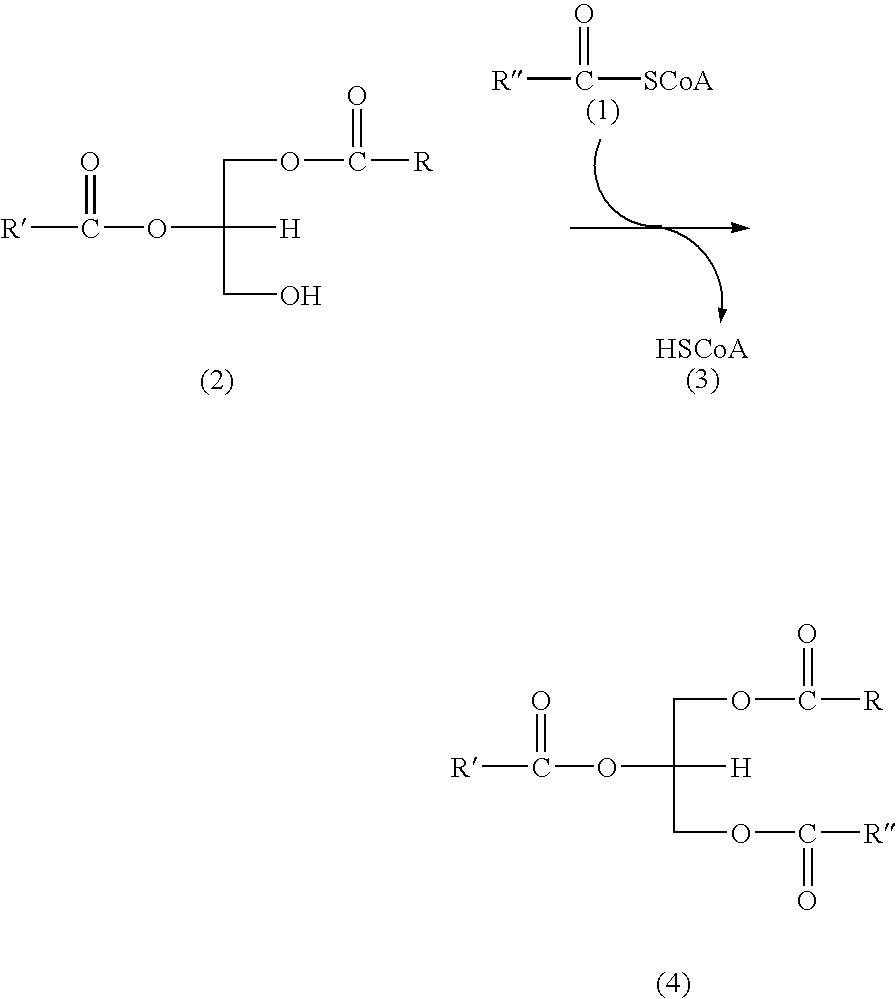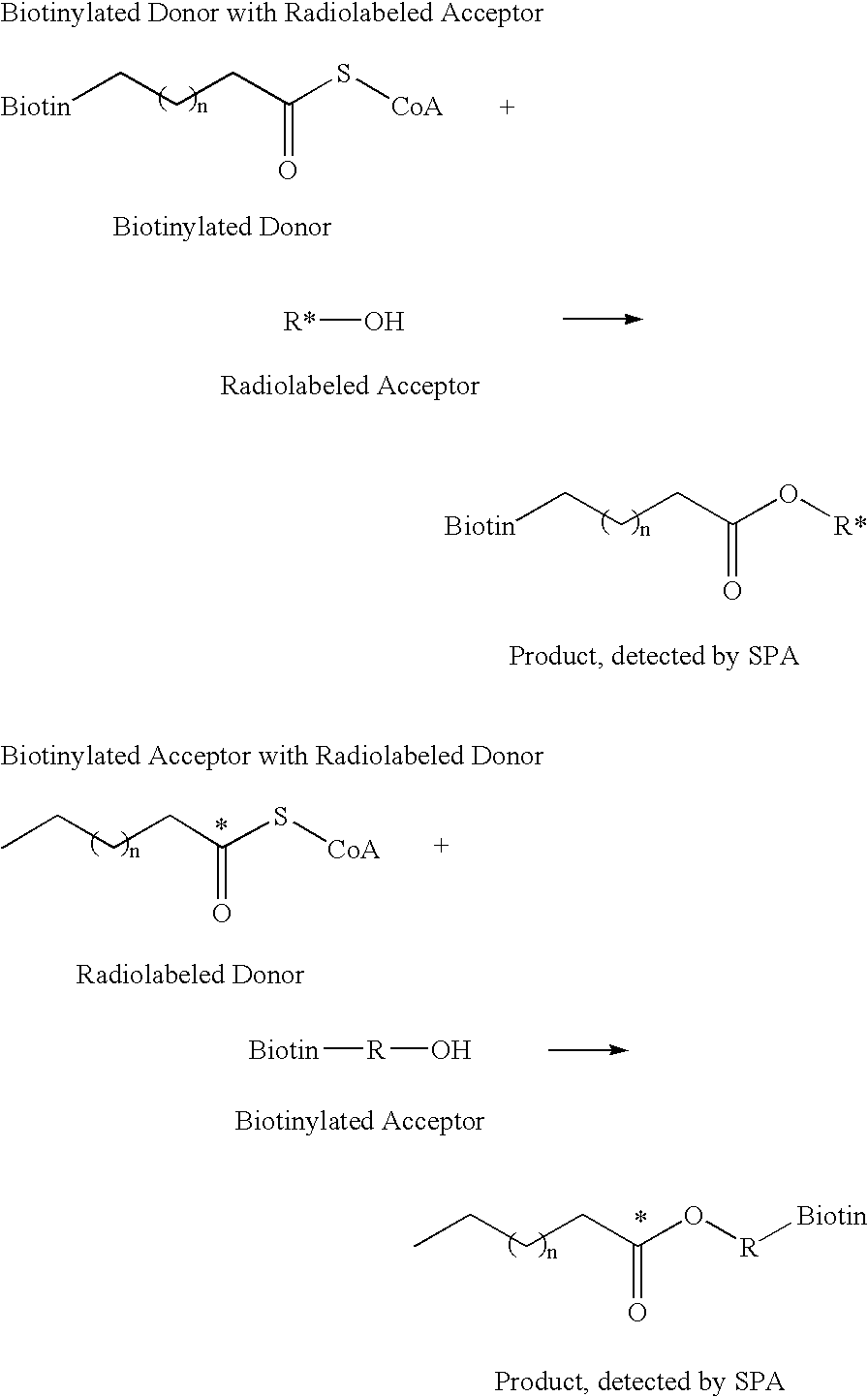Human diacylglycerol acyltransferase 2 (DGAT2) family members and uses therefor
- Summary
- Abstract
- Description
- Claims
- Application Information
AI Technical Summary
Problems solved by technology
Method used
Image
Examples
example 1
Identification and Characterization of Human DGAT2 Family Member cDNAs and Proteins
[0345] A number of gene sequences were identified which have homology to the DGAT2 sequences. The human DGAT2, (herein referred to as 86606) sequence is depicted in SEQ ID NO:9, which is approximately 2428 nucleotides long including untranslated regions, contains a predicted methionine-initiated coding sequence of about 1166 nucleotides (nucleotides 220-1386 of SEQ ID NO:9). The coding sequence encodes a 388 amino acid protein (SEQ ID NO:10).
[0346] The human DGAT2 family member sequence 60489 (SEQ ID NO:7), which is approximately 1255 nucleotides long including untranslated regions, contains a predicted methionine-initiated coding sequence of about 1025 nucleotides (nucleotides 170-1195 of SEQ ID NO:7) The coding sequence encodes a 341 amino acid protein (SEQ ID NO:8).
[0347] The DGAT2 family member sequence 112041 (SEQ ID NO:19), which is approximately 1716 nucleotides long including untranslated r...
example 2
Identification and Characterization of Murine DGAT2 Family Member cDNAs and Proteins
[0353] A number of murine gene sequences were also identified which are related to DGAT2 sequences. The murine DGAT2 sequence (m86606) is depicted in SEQ ID NO:11, which is approximately 2262 nucleotides long including untranslated regions, contains a predicted methionine-initiated coding sequence of about 1166 nucleotides (nucleotides 207-1373 of SEQ ID NO:11). The coding sequence encodes a 388 amino acid protein (SEQ ID NO:12).
[0354] The murine DGAT2 family member sequence m58765 sequence (SEQ ID NO:5), which is approximately 1748 nucleotides long including untranslated regions, contains a predicted methionine-initiated coding sequence of about 758 nucleotides (nucleotides 254-1012 of SEQ ID NO:5). The coding sequence encodes a 252 amino acid protein (SEQ ID NO:6).
[0355] The DGAT2 family member sequence m112023 (SEQ ID NO:15), which is approximately 1255 nucleotides long including untranslated r...
example 3
DGAT2 Family Member Gene Expression in Human and Mouse Tissues RNA Samples
[0357] Human tissue samples were either purchased from Invitrogen or were prepared from samples available at Millennium. Total RNA samples from various mouse tissues were extracted from 8 week old female mice. All mice were purchased from Jackson Labs. To investigate tissue distribution of these genes, cDNAs were prepared from RNA samples prior to Taqman analysis.
[0358] RNA was prepared using the trizol method and treated with DNAse to remove contaminating genomic DNA. cDNA was synthesized using random hexamer primers. Mock cDNA synthesis in the absence of reverse transcriptase resulted in samples with no detectable PCR amplification of the control 18S gene confirming effiecient removal of genomic DNA contamination. Taqman analysis was performed following the manufacturer's directions.
[0359] PCR probes were designed by PrimerExpress software (PE Biosystems) based on the respective sequences of murine and hu...
PUM
| Property | Measurement | Unit |
|---|---|---|
| Fraction | aaaaa | aaaaa |
| Fraction | aaaaa | aaaaa |
| Concentration | aaaaa | aaaaa |
Abstract
Description
Claims
Application Information
 Login to View More
Login to View More - R&D Engineer
- R&D Manager
- IP Professional
- Industry Leading Data Capabilities
- Powerful AI technology
- Patent DNA Extraction
Browse by: Latest US Patents, China's latest patents, Technical Efficacy Thesaurus, Application Domain, Technology Topic, Popular Technical Reports.
© 2024 PatSnap. All rights reserved.Legal|Privacy policy|Modern Slavery Act Transparency Statement|Sitemap|About US| Contact US: help@patsnap.com









